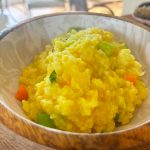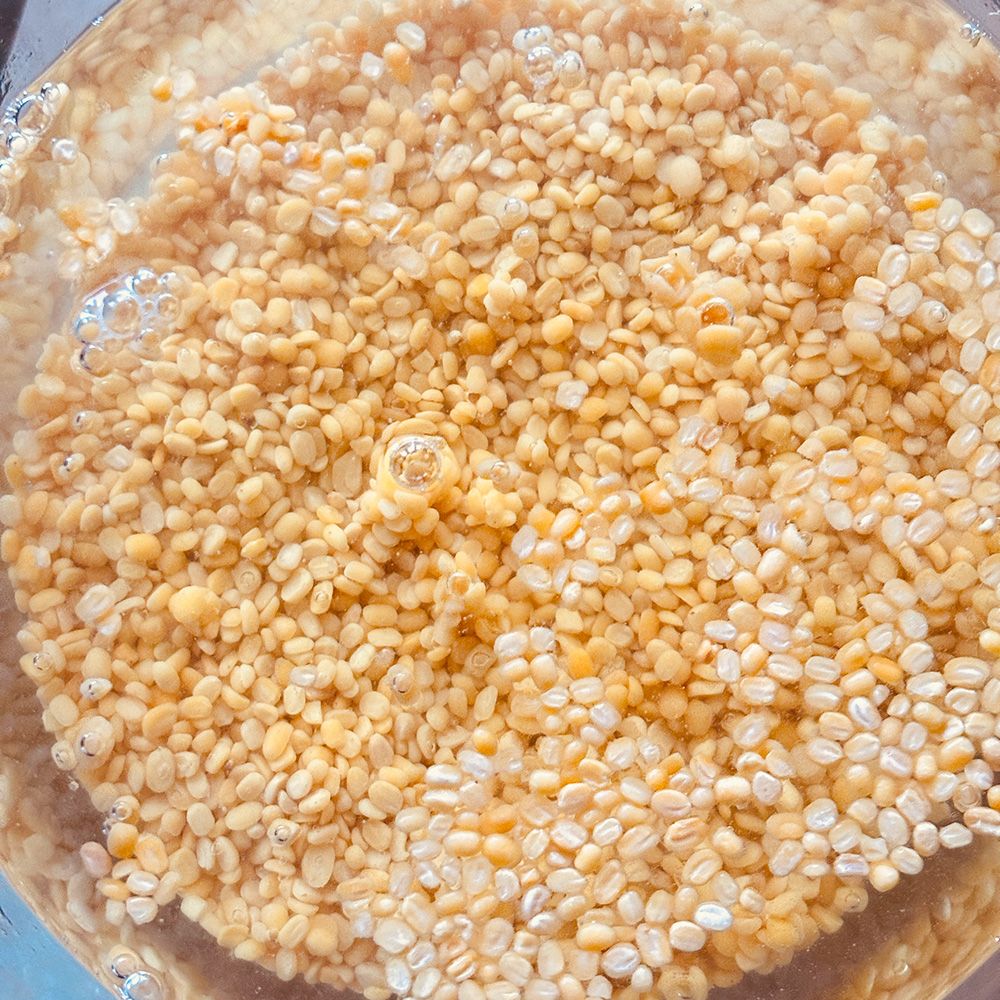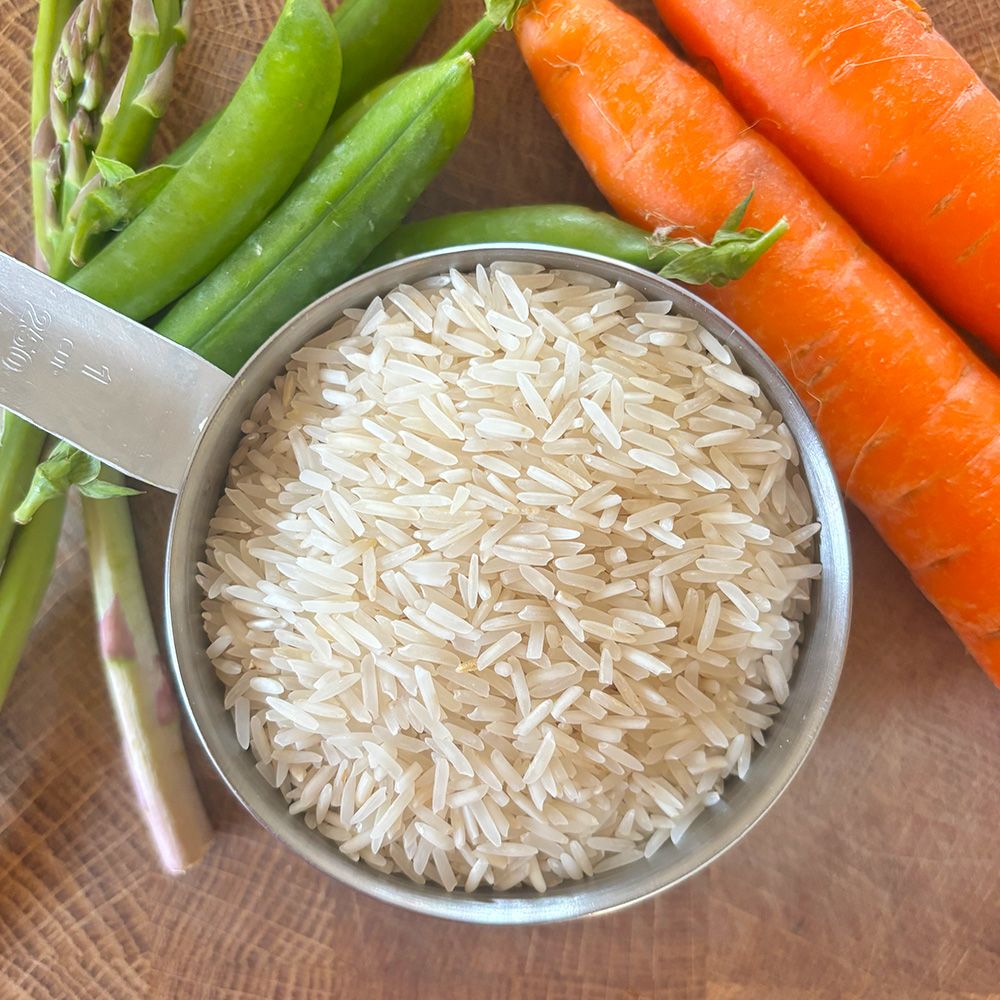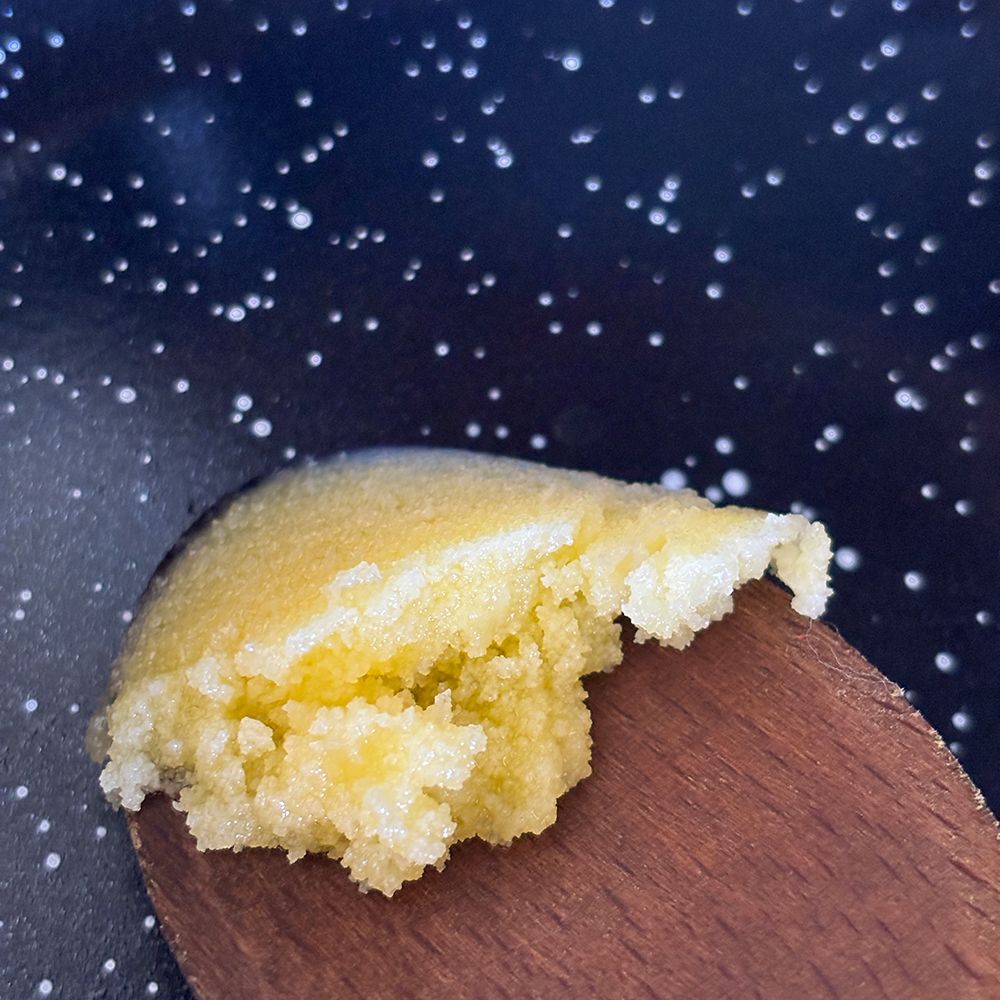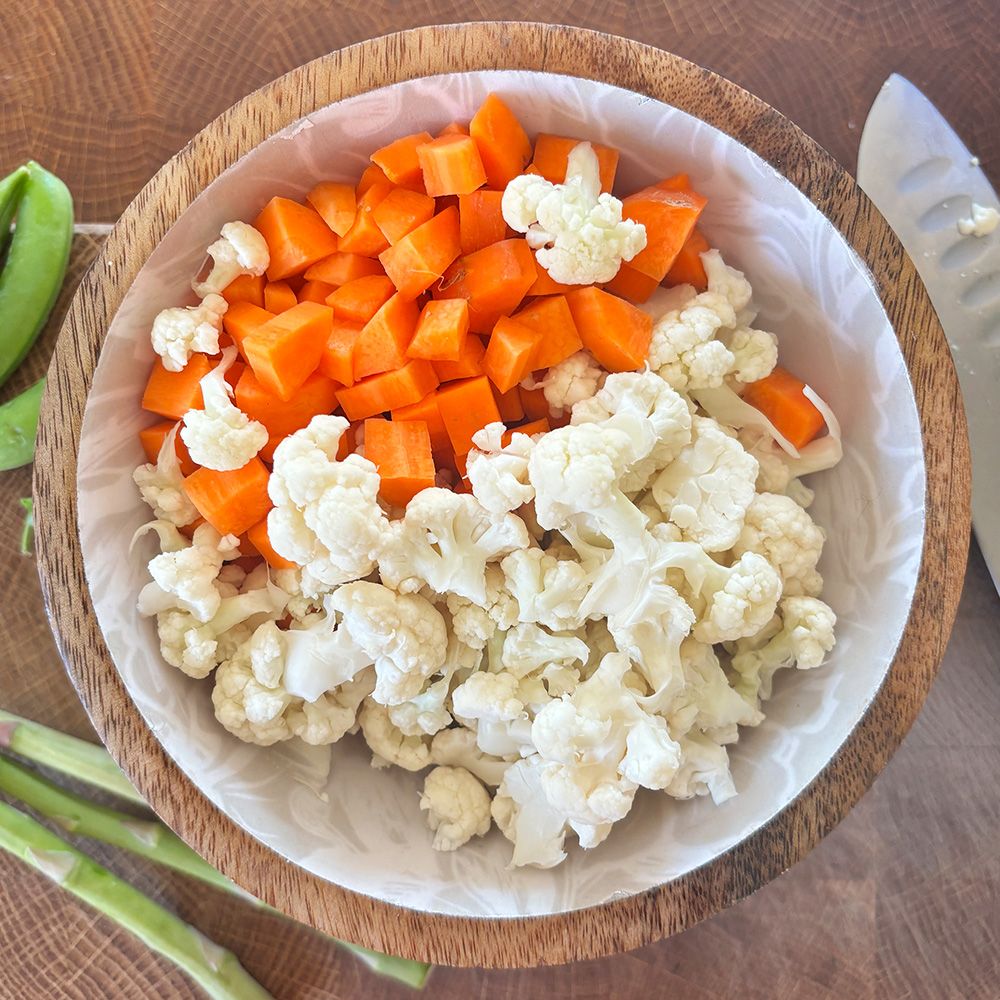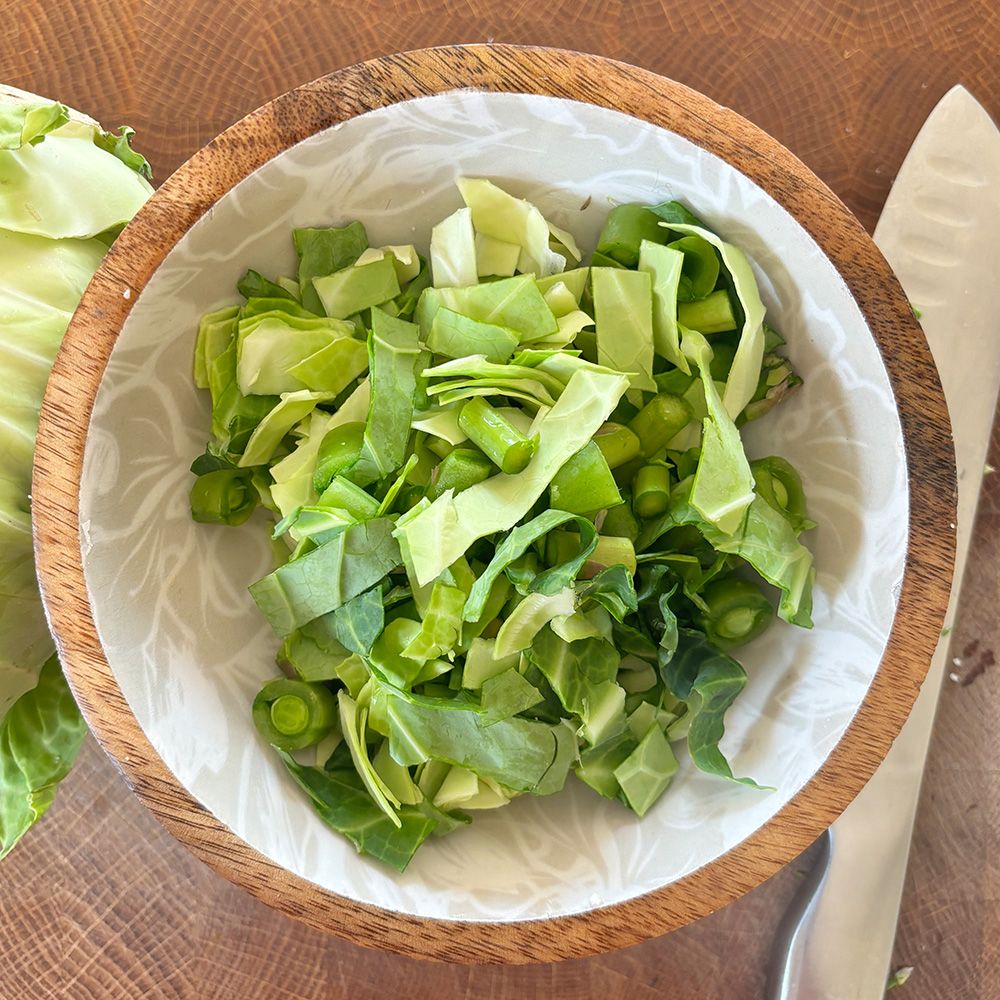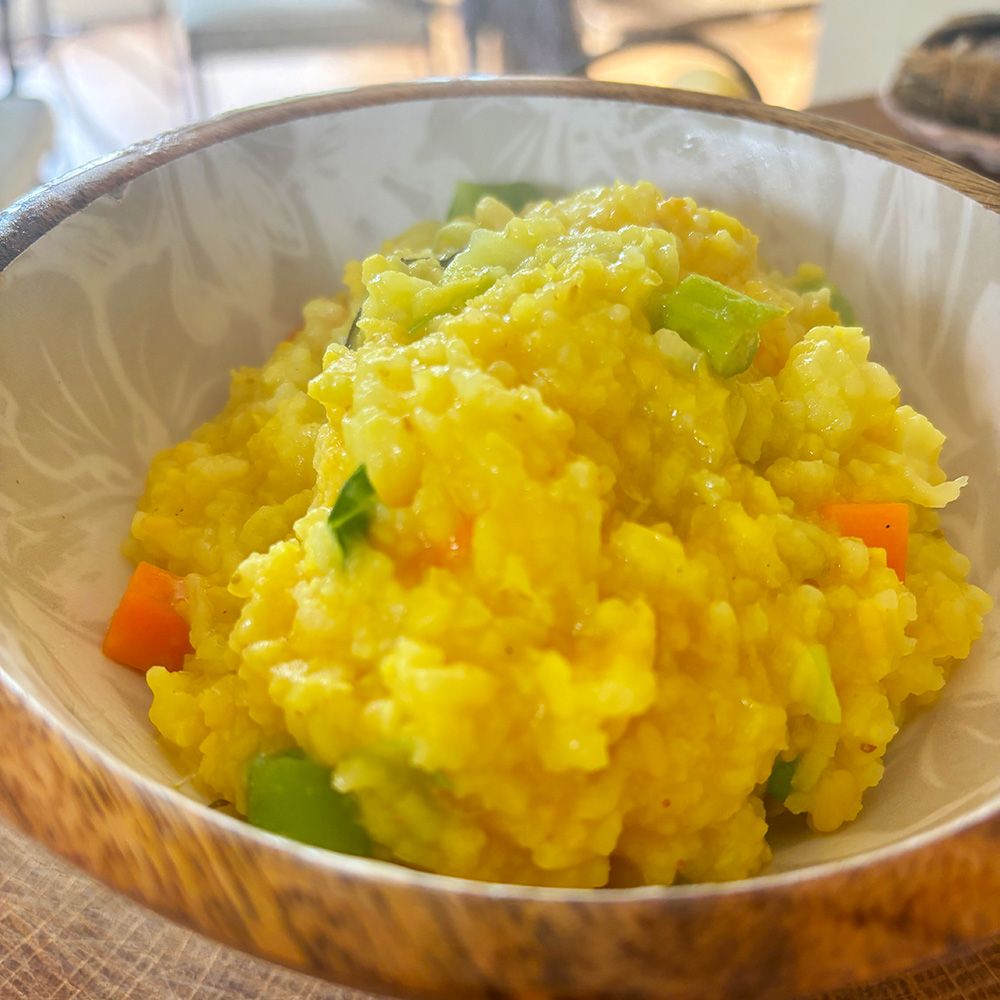Description
This creamy, porridge-like blend has been a centrepiece of Ayurvedic cuisine for centuries. It nourishes both the sick and the healthy, the young and the elderly, and is perfect for regular meals or special detox periods. Khitchari is simple yet very soothing and nourishing, making it an ideal choice for breakfast or dinner. Honestly, this dish is my go-to meal when I only have half an hour to cook or immediately after a cleanse.
Ingredients
1 cup yellow split mung dal
1 cup basmati rice
6 cups of hot water (more if having immediately after a detox)
2 cups diced vegetables (e.g. raddish, carrots, asparagus, cauliflower, broccoli, kale – whatever’s in season)
1 tablespoon of ghee or olive oil
6 fresh curry leaves
1 teaspoon ground fennel seeds
1 teaspoon grated fresh ginger (or use half a block of frozen)
Half a teaspoon ground turmeric
2 teaspoon of salt
1 teaspoon olive oil
Garnishes: fresh coriander, basil, dill or parsley and lime wedges
Instructions
- Soak the mung dal for 30 minutes, then drain, wash well, and drain again. Wash and drain the basmati rice twice in warm water.
- Combine the mung dal, rice, and water in a heavy saucepan. Brings to a full boil over high heat, stirring occasionally and removing any froth from the surface.
- Add your *vegetables, ghee, curry leaves, fennel, ginger, and turmeric and mix well (this time I used a tablespoon of the Ayurvedic Summer Spice Mix rather than fennel and turmeric separately as they’re contained in the mix). *For quick cooking vegetables add these 15 minutes into boiling the khitchari. Reduce the heat to medium-low, cover with a tight-fitting lid, and simmer gently for 20 minutes, or until the mung dal and rice and soft and fully cooked, stirring occasionally to prevent them from sticking to the bottom of the pan. If the khichari starts to dry out, add more water.
- Turn off the heat and add the salt and olive oil. Serve garnished with fresh herbs and lime wedges.
Notes
There is some hidden magic behind the simplicity of this “pot of gold”.
If you eat this khichari as part of a cleanse, add more water to bring it to a soupy consistency; reduce the salt by half or omit altogether. Less or not salt support elimination.
For more protein, substitute 1 cup chana dal (split chickpeas) for the mung dhal. Cook the chana on it’s own I 6 cups of water for 20 minutes or until it is soft and beings to break apart. Then add the rest of the ingredients in step 2.
